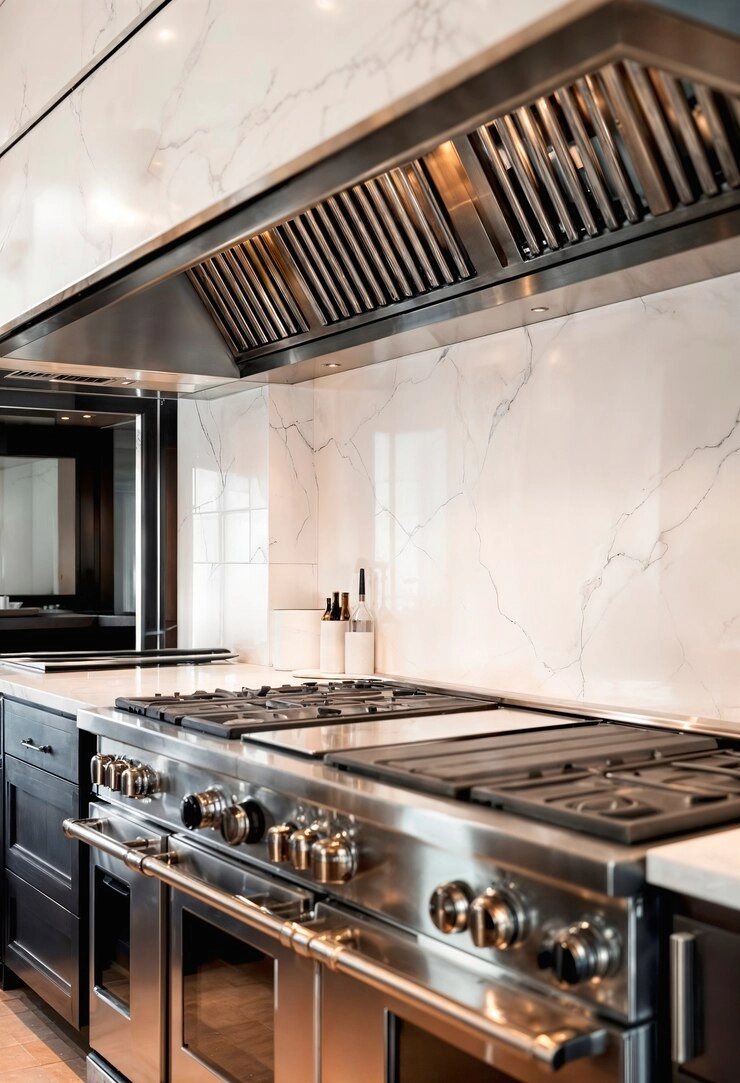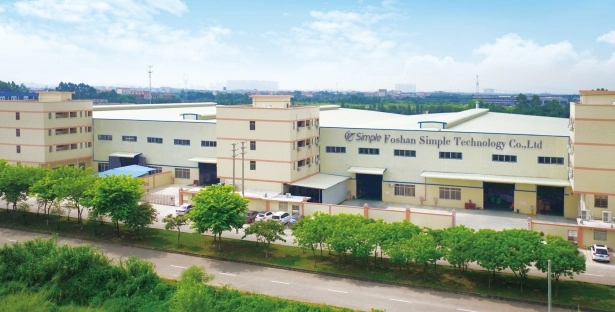5 Days a week from 8:30 am to 5:30 pm
Comparing Range Hood Filters: Asian Stir-Fry vs. European Baking

Picking the right range hood filter keeps your kitchen clean. Asian stir-fry and European baking create different messes, needing special filters. This guide looks at cooking styles, their effect on filter needs, and why Simple offers trusty custom solutions for all kinds of kitchens.
What Are the Key Differences in Cooking Styles Between Asian Stir-Fry and European Baking?
Asian stir-fry and European baking have different ways that change what kind of range hood filter you need. These differences decide how to keep your kitchen fresh and clean.
Characteristics of Asian Stir-Fry Cooking
Asian stir-fry uses high heat and lots of oil, often in a pan. Cooks use quick, hot flames to sear food, making lots of smoke and grease. Dishes like fried rice or stir-fried veggies give off oil splashes and strong smells from spices, garlic, or sauces. This cooking sends greasy bits into the air. These bits can stick to kitchen surfaces if not caught by a filter. Stir-frying happens a lot on the stovetop, so you need strong air cleaning.
Features of European Baking Techniques
European baking, like making bread or pastries, uses ovens and less stovetop heat. Baking makes steam from dough or batter and soft smells from things like butter or herbs. It creates less grease than stir-frying but more dampness, which can make the kitchen wet. Baking smells are lighter, often sweet or savory. You need filters that handle steam and mild smells, not heavy grease.
How Do Cooking Styles Influence Range Hood Filter Requirements?

The messes from Asian stir-fry and European baking change what kind of range hood filter you need. Each cooking way brings its own challenges for keeping the kitchen airy.
The Role of Smoke and Grease in Asian Stir-Fry
Stir-frying’s hot flames and oil make thick smoke and greasy bits. These can stick to walls, cabinets, or tools, leaving a messy layer that’s hard to clean. A range hood filter needs to catch these bits well to stop buildup. Greasy cooking can also raise fire risks if filters aren’t cleaned often. Filters for stir-fry must handle lots of greasy air while keeping the kitchen safe and tidy.
The Impact of Steam and Odors in European Baking
Baking makes steam and light smells that need different filtering. Steam from ovens can leave dampness, which might cause mold if not pulled out. Baking smells, though nice, can stay and mix with other kitchen odors. Filters for baking should focus on catching dampness and clearing smells. They don’t need to trap as much grease as stir-fry filters do.
What Types of Range Hood Filters Are Suitable for Each Cooking Style?
Different filters work best for the special needs of Asian stir-fry and European baking. Choosing the right one keeps your kitchen air clean.
Filters Designed for High Grease and Smoke Environments
Baffle Filters for Asian Stir-Fry
Baffle filters are great for Asian stir-fry because they catch grease well. Made of strong metal, they use curved parts to grab grease while letting air pass. The grease collects in channels, making cleaning simple. These filters, like the metal grease filter from Simple Kitchen, are tough and perfect for hot, greasy cooking. You need to clean them often to keep them working well, but they handle smoky kitchens nicely.
Charcoal Filters for Enhanced Air Quality
Charcoal filters are good at clearing smells and smoke, helping baffle filters in stir-fry kitchens. They use special carbon to soak up greasy bits and remove strong cooking smells, like fish sauce or chili. Charcoal filters work well in hoods without ducts, improving air freshness. You need to replace them every 3 to 6 months, depending on how much you cook. They help keep kitchen air clean.
Filters Optimized for Steam and Odor Management
Mesh Filters for European Baking
Mesh filters are best for European baking, where steam and light smells are the main issues. Made of layered metal, they catch tiny bits and dampness while letting air flow. Mesh filters aren’t great for heavy grease but work well for steam from baking bread or cakes. They’re easy to clean and keep up, making them a smart choice for baking homes.
|
Filter Type |
Best for Cooking Style |
Key Benefits |
Maintenance Needs |
|
Baffle |
Asian Stir-Fry |
Catches grease, strong |
Clean weekly/monthly |
|
Charcoal |
Asian Stir-Fry |
Clears smells, fresher air |
Replace every 3–6 months |
|
Mesh |
European Baking |
Handles steam, simple to clean |
Clean monthly |
Why Is Customization Important When Choosing a Range Hood Filter?
Tailoring Filter Performance to Specific Cooking Needs
Every kitchen has its own needs based on how you cook. A standard filter might not handle stir-fry grease or baking steam well. Custom filters, made for your specific hood and cooking style, work better. For example, someone who loves stir-fry might need a strong baffle filter. A baker might want a mesh filter for dampness. Custom filters make cleaning easier and keep your kitchen tidier.
Benefits of Customized Solutions for Diverse Kitchen Environments
Custom filters fit different kitchens, from small homes to big restaurant spaces. They match your hood perfectly, stopping air leaks and improving suction. Special materials, like thicker metal for grease or finer mesh for steam, suit your cooking needs. This keeps the air cleaner and reduces tool problems. Custom filters also save money by lasting longer and needing fewer fixes.
How Does Simple Provide Reliable Customized Range Hood Filter Solutions?
Simple is a dependable supplier of custom range hood filters, offering solutions for all kinds of cooking needs.
Overview of Simple’s Expertise in Filter Customization
Simple Kitchen is skilled at making high-quality filters for home and restaurant kitchens. They know the challenges of different cooking styles, like Asian stir-fry or European baking. Their team works with customers to create filters that fit specific hoods and cooking habits. Simple uses strong materials and smart methods to make filters that last and work well, making them a top pick for custom air solutions.
Key Features of Simple’s Products and Services
Simple Kitchen offers many benefits that make them stand out:
- Strong Materials: Filters like the high-efficiency grease filter use top-quality metal or special tech for great grease and smell capture.
- Custom Sizes: Simple makes filters to fit any hood, ensuring they work perfectly.
- Helpful Support: Their team gives advice on picking and caring for filters through their contact page.
- Wide Use: Products work for both home and restaurant kitchens, handling all cooking styles.
Simple’s focus on quality and custom work makes them a reliable choice for kitchen air cleaning.
Conclusion
Picking the right range hood filter depends on how you cook. Asian stir-fry needs grease-catching baffle or charcoal filters. European baking works best with mesh filters for steam and smells. Custom filters improve how well they work, keeping your kitchen clean. Simple provides tailored solutions for all needs, making them a trusted pick for good air flow.
FAQs About Range Hood Filters for Different Cooking Styles
What Is the Best Filter Type for Heavy Grease Cooking Like Stir-Frying?
Baffle filters are best for stir-frying because they catch grease well. Pair them with charcoal filters for better smell control, like those from Simple.
Can One Filter Type Effectively Handle Both Asian and European Cooking Styles?
No single filter works perfectly for both. Baffle filters are good for stir-fry grease, while mesh filters handle baking steam. A custom filter from Simple can balance both needs.
How Often Should Range Hood Filters Be Cleaned or Replaced Depending on Usage?
Baffle and mesh filters need cleaning every 1 to 2 weeks for heavy use, or monthly for light use. Charcoal filters should be replaced every 3 to 6 months. Regular care keeps them working well.

